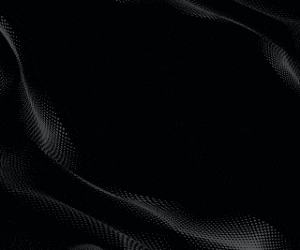Attributes of safety, raceability, cost-effectiveness, efficiency, relevant technology, American-made, green and modern look have been rolled into the chassis strategy selection that was rolled out in the form of 3D renderings at the Indianapolis Museum of Art.
The platform is a universal road/oval rolling chassis with an enhanced driver safety cell and an anti-wheel lock design that will be produced by long-time IZOD IndyCar Series partner Dallara Automobili at a state-of-the-art facility to be built on Main Street in Speedway, Ind. -- a few hunderd yards from the Indianapolis Motor Speedway and the Indy Racing League offices.
The IndyCar Safety Cell will serve as the base, with bodywork (aero kits of front and rear wings, sidepods, engine covers) an open development area. Any manufacturer (including inhouse by teams) will be able to produce aero kits for the chassis with stipulations that the parts receive approval from the IZOD IndyCar Series, be available to all teams, undergo safety testing approved by the IZOD IndyCar Series and have a maximum price of $70,000. Each team will be allowed to purchase two aero kits per car each season.
Dallara’s rolling chassis (encompassing everything but the driver's seat) will cost $349,000 -- a 45 percent price decrease from the cost of each of the 26 cars that will compete this weekend in the Honda Indy Toronto. Dallara's aero kit the first year of the program will be available for $45,000, increasing to the $70,000 ceiling the second year. Total weight will drop 185 pounds to 1,380, with a minimum weight determined once variables with suppliers, including engine weight, are determined.
committee member and IZOD IndyCar Series president of competition and racing operations Brian Barnhart commented:
"We were really facing a difficult challenge because there wasn’t a clear directing where to take the series for that next generation. In fact, some of the challenges we faced were in contraction to each other because there was a mandate from the participants to reduce the cost of participation yet at the same time there’s the desire from both participants and the fans to see some competition.
Historically, increased competition means increased costs. What’s really excited is we feel we’ve achieved a solution that solves both of those challenges. It looks as if we’ll create an opportunity for competition, innovation and relevant technology while reducing the cost of participation nearly in half in running costs."
Increased will be the economic impact on the local and state levels with the production facility and supporting motorsports industries. Indiana Gov. Mitch Daniels announced that teams that order the first 28 rolling chassis with receive a discount.
The companion 2012 engine strategy, which was announced recently, includes turbocharged engines (allowing flexibility in power) with up to six cylinders and 2.4 liters of displacement, tuned to produce between 550 and 750 horsepower to suit the diverse set of racetracks on the IZOD IndyCar Series schedle. An overtake assist system will provide a time-limited gain of up to 100 HP, and ethanol will remain the fuel.
Together, IZOD IndyCar Series officials expect the complete rolling chassis/engine lease package to cost less than $1 million.
IZOD IndyCar Series CEO Randy Bernard continued:
"We are very pleased with the outcome of the search for our 2012 car as we feel we’ve met our objective of opening the door to competition and creating the opportunity for different looking cars to compete on the track,” IZOD IndyCar Series CEO Randy Bernard said. "This car puts everything all of our stakeholders want on the racetrack: safety, competition on and off the track, diversity, efficiency and more.
The new car also is a cost-effective package that positions the series for tremendous growth and enhances the series’ relevancy to future automotive technology, while respecting the tradition of innovation in open-wheel racing.
For the past two and a half months, a group of seven experts from various disciplines in motorsports, led by retired four-star General William Looney, have come together to review, research and recommend a future car. This is one of the biggest decisions the IZOD IndyCar Series will make this decade and these exceptionally bright minds have worked diligently with the best interest of the future of the sport in mind. I would like to thank them for their hard work and dedication to this process.
Personally, it has been amazing to see how over the course of this process the ICONIC Advisory Committee started with drastically different visions and opinions, but in the end were able to funnel down to unanimous decisions."
Committee members include Barnhart; Tony Cotman, a two-time Indianapolis 500 crew chief who served as vice president of operations for the Champ Car World Series and oversaw its implementation of a new chassis; Gil de Ferran, the former sporting director for Honda F1 and current IZOD IndyCar Series team managing partner; Eddie Gossage, president of Texas Motor Speedway; Rick Long, longtime developer of high-performance racing engines and co-founder of Speedway Engine Development; Tony Purnell, former technical consultant to the FIA and found of Pi Research; Neil Ressler, former chairman of Jaguar Racing in F1 and principal design engineer for Ford.
The Indy Racing League received proposals from five potential chassis manufacturers – BAT Engineering, Dallara, DeltaWing Racing Cars, Lola and Swift Engineering – and the committee entertained their presentations. At the same time, committee members solicited information and input from current IZOD IndyCar Series team owners, fans, current and former open-wheel racing drivers, manufacturer and sponsor stakeholders and internal marketing research.
Tony Purnell commented:
"After reviewing all the intriguing designs that were presented to the ICONIC Advisory Committee, we felt this was the best direction to provide the diversity fans desired while making it the best value for the teams in the series,” “This new strategy, which is on the leading edge of motorsports worldwide, will revolutionize the sport by opening the door for multiple manufacturers to produce parts of the car. And it is not just limited to chassis manufacturers.
It’s our goal to reach out and challenge the automotive industry as well as aerodynamic companies. So come on Ford, GM, Lotus, Ferrari. Come on Lockhead and General Electric. Come on you young engineers who might be working in small shops and garages. We've done our best to provide the framework for you to showcase your technical prowess without the need for a major raid on your piggybank."







